Why invest in solar? We’re looking at the money spent on our solar system as an investment with returns in environmental protection, publicity, and if everything works out, a financial profit as well. Solar power will reduce our use of electricity created by burning fossil fuels, which will help with smog and global warming. This is cool, but not our only reason for wanting a solar electric system.
Our customers appreciate green practices
Our customer’s reactions to our participation in the Bay Area Green Business Program, consumer waste oil collection program, and our own accidental entry into battery collection and recycling “business” has taught us that our customers care about the environment. Some of our customers have even told us the reason they started to bring their cars in was our participation in Green Business Program.
Being good to the earth is a lot cheaper than a yellow page ad, and makes us feel good too. We’ve been in the same spot for 25 years and plan to be here for 25 more. Over the long term, provided the solar panels last as long as they were designed to, we should actually turn a profit on the system, especially if electricity prices rise. So to recap: good for the earth, good for our business, good for our wallets. Why solar? Why not!
To Save Money!
PG&E will credit your bill for power generated, but will not issue a check for power generated over your needs. So it makes sense to carefully plan a system to meet the power requirements of your home or business, but not exceed it. If you install to large a system, you’ll be giving away free power to PG&E, who will no doubt use it to give their top executives a fat bonus before filing for bankruptcy and being bailed out by the taxpayers, again. If you install too small of a system, you will still have to pay for some of your electricity.
This is why using an experienced local solar contractor is important. They know how their systems will perform in the real world based on past installations. Sunlight and Power first checked a full year of PG&E bills to determine our power consumption, then designed a system to match.
Preparation
Before installing the solar system, we had to correct one of the buildings electrical oddities. Our building had two power meters. One on the newer and more robust San Pablo underground line, and the other on the older and more trouble prone Russel above ground line. We were advised that the solar system should be tied into only one meter, so we had a contractor come out and tie all of our buildings into the meter on San Pablo side. Our old meter panel was bypassed.
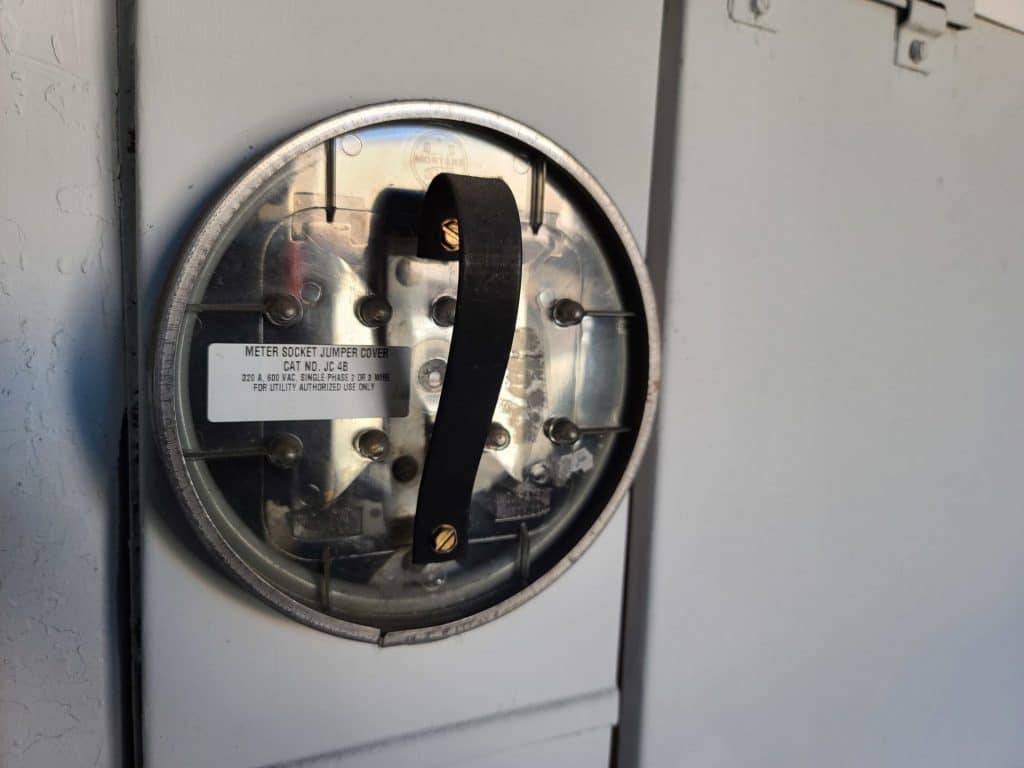
The first step in installing a solar electric system is a consultation with the company who will be designing and installing the system. We’re working with Sun Light & Power . They’ve checked past electrical usage and talked to us about our goals for the system. The next step is the site survey, where they check the amount of space available for solar panels, check existing wiring, and determine the best way to install the system.

Here’s a picture of Blake and Charlie from Sun Light & Power, tape measure at the ready. They’ve come to do the site survey.
Next Daniel and Pete came out to start building the mounting system for the solar panels.They install mounting posts for the solar panels in the roof, running along the rafters. Art’s Automotive has grown bit by bit over the years and working space has been added as it was needed. The three buildings that stand on our main lot were all built at different times. The rafters run in different directions on the two building where the solar panels are, so the chalk lines and posts run in different directions as well.
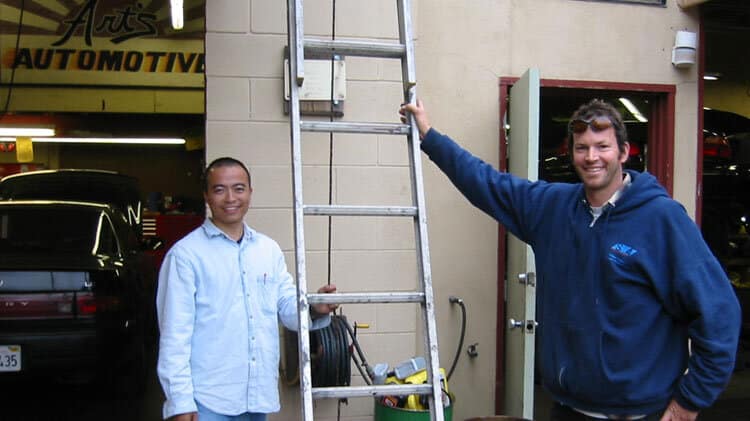
Roof repair
The roofers came out to check to make sure the roof was sound. As it turns out, it wasn’t. The roof leaked and had rotted sections. In addition a vent fan was improperly mounted. The roofers has the roof up to snuff in a couple of days. It’s a good thing it got fixed before the installation had gotten too far along. The roofers also seal the mounting posts so the don’t leak where they are bolted into the roof.
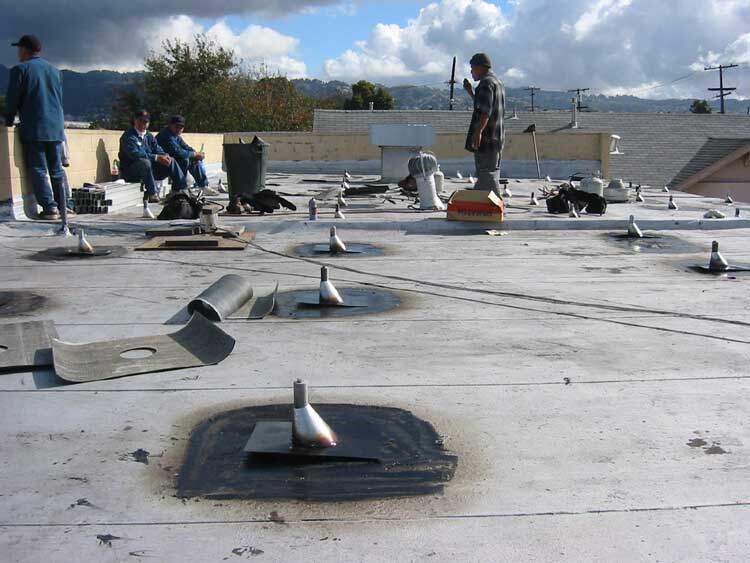
Power inverters
As the roofers work to seal the mounts, the guys from Sunlight and Power install the inverters, which convert the DC (direct current) the solar panels generate into AC (alternating current), so the system can be connected to the power grid. Hybrid and electric cars also have inverters, but they’re a little different. Solar inverters work at only one frequency, 60 Hz. Hybrid vehicle inverters vary the frequency (Hz) in order to control the speed of the motor. They also convert AC into DC to charge the battery pack.
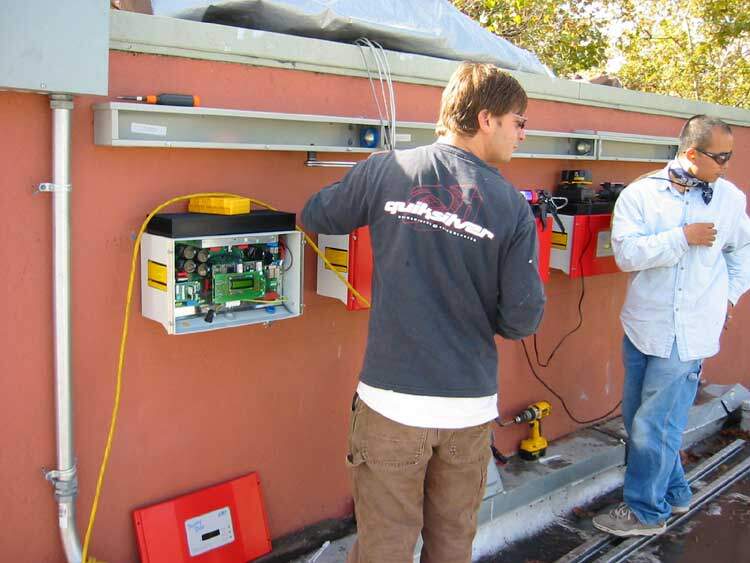
Solar panel Mounts
The mounts are complete. This picture shows a little over half of all the panel mounts. All we need now are the panels. Unfortunately, the panels are on back order, so we’ll have to wait.
On the bright side, it’s winter, and the panels would not be working at their full potential; it’s less frustrating to not have the panels now than it would be in the middle of summer. Most of the mounting system is made of aluminum, which is more expensive that steel, but I suppose the addition of weight to a structure not originally designed to support it should be minimize. All of the mounts are grounded together and to the panel frames with braided wire reduce the danger of electrocution should a short occur in one of the panels or in the wiring.
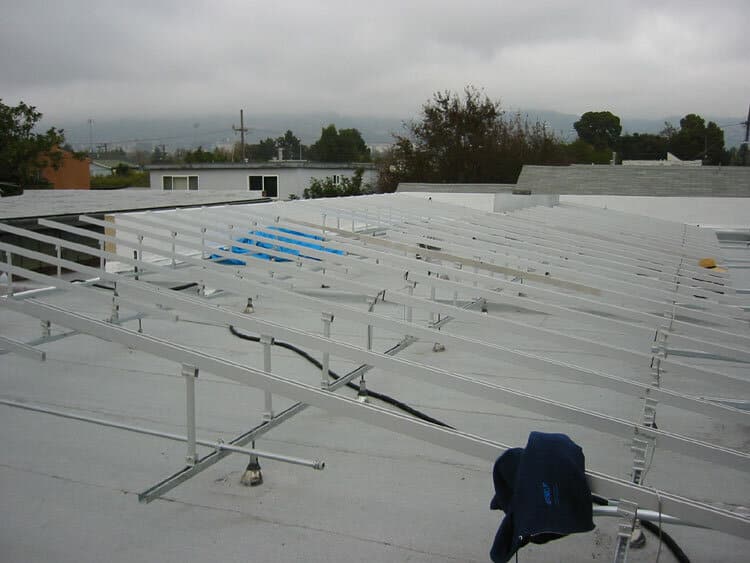
After a few weeks, Sun Light and Power comes out to double check their work. The panels scheduled to arrive the next day and they want to make sure everything is ready. When the panels come in the next morning, they fly up. I took this picture while the crew was taking their lunch. The underside of the panels are surprisingly clean. Not a lot of jumbled wiring or electrical doodads.
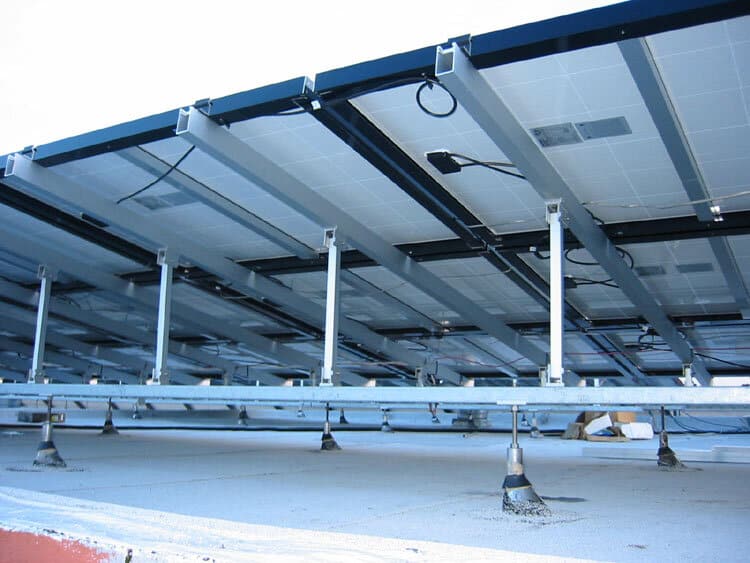
Grid tied system
Our system is grid tied, meaning that when our system can make more voltage than is coming from PG&E, our meter spins backwards. If PG&E’s line voltage is higher than what our system is producing, the meter goes forward and we are billed for the electricity. It is possible to make an off-grid system, but we’d need to install batteries to store the electricity. That means loss of capacity over time and eventually replacement of the batteries. It doesn’t make sense for us, but for people in remote areas or living in fear of an apocalypse, it might be a good plan. Here a worker is connecting our solar system to the grid for testing.

It works!
After a break in the clouds, we watch the meter go the “wrong” way. Obsession with watching the meter is normal for new solar owners. I have solar at home too, and when it was first installed I was logging amperage and reviewing the data every day.
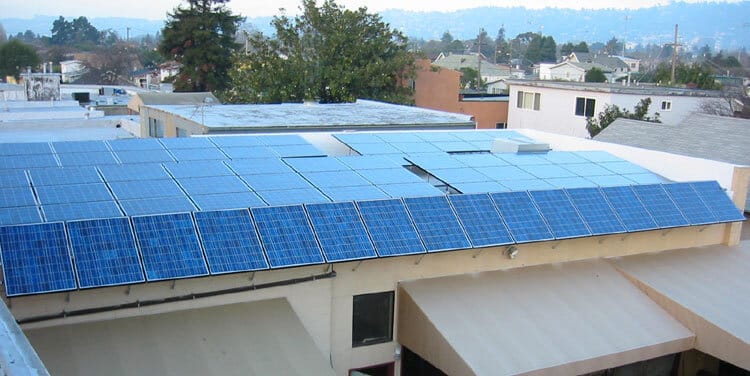
An update, 17 years later.”
This article along with many others were “lost” during one of the many transitions and changes to the website over the last 20 years.
We’ve now had the system running for 17 years (2003-2020). Nothing has broken except for one inverter right after installation. Solar power has reduced our electric bill substantially.
PG&E charges for electricity on a tier system. The more you use, the more you pay per kilowatt hour. It’s sort of like tax brackets. Our system doesn’t meet all of our need for electricity, but it puts us on a lower tier so we pay less for electricity. Also, prices have increased quite a bit with inflation, but our system, which was paid off in 2008, still provides us electricity at a fixed price.
Would we do it again, absolutely!

